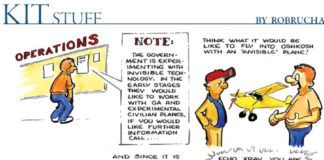
That Guy
Ive heard about him since I first started flying. Hes usually at a small airport and just happens to walk up as you need a part, a ride or directions from someone with local knowledge. Ive wondered if he really existed.
My flying guru, Darrin, of Jackson Flight Center, went with me from Moses Lake, Washington to Scappoose, Oregon to deliver my old Challenger and fly home the Cessna 150 Id traded it for. Of course the weather report showing a break in the clouds and rain that had been going on for the past six weeks that spring was less than accurate. We spent the night with the hopes of leaving early in the morning with a planned flight path following the Columbia River Gorge to hopefully stay under the clouds.
By about 10 a.m., we had about 5 miles visibility so we said, Lets go! Within 30 miles, visibility decreased and the clouds seemed to sink toward the ground. It wasn’t until just north of Troutdale and barely out of Portlands airspace that we saw nothing but a wall of clouds in front of us. As we made a fairly steep 180 turn, we both noticed a runway just under the left wing and almost at the same time said, Airport. Our turn ended in a downwind and we continued in for a landing keeping a watch for traffic since we didn’t know the local frequency.
The airport was Grove Field in Camas, Washington, and I admit it was small enough that I hadn’t even noticed it when planning the flight. We taxied to the parking area, tied down and were standing with our hands in our pockets, looking at the sky, when a man walked up to us. Barely through the introductions he said, It looks like there are three things you guys need: a ride to get lunch while you decide what to do, a tour of town to see where the motels are in case you don’t get out today and transportation. So Ill take you to lunch, show you around, and then you take me home and keep my car until you leave. When you make it out just park the car in the lot here at the airport. All this was within seconds of learning our names.
We had a nice lunch and in conversation learned our benefactor had a Piper Pacer at Grove Field, but worked as a pilot for a major airline. After lunch, a quick tour of town and a stop to drop him off at home, the clouds seemed to be getting lighter, so we went back to the airport. As we got there, we could see a break in the direction of our flight path and decided to give it a try. If it was too bad, we could come back and use our new transportation to get to a motel. It was close but legal for the first 10 miles and then opened up so that all we had the rest of the way was a 40-knot tailwind and thunderstorm cells over the central basin. It was an S-shaped course to stay away from the cells, but we made it home without problems. So I now know that that guy does exist. He flies out of Grove Field in Camas, and his name is Neil. We didn’t use all the help offered, but still I have to say thanks, Neil. Ill probably never get the chance to pay back your kindness, so Ill settle for trying to pay it forward.
Dean Hankins
Gassed Up
That was a great article on leaded fuel in the October issue. One idea that I had (maybe too simplistic) is to buy a can of lead additive. Is there a reason why we could not add this to the fuel of the future to raise the anti-knock rating?
Steve Rothert
I really enjoyed your article Altogether now, (Around the Patch, October 2010), but there are two points that you left out that may be pertinent to the topic. Number one is the fact that many of us are already using auto gas in our small planes and with much longer plug life and even better mileage. The second is that if the aviation community would get rid of the 1930s-tech mags and go to computer ignitions, we could all use auto gas. My wife and I drive a Mercedes C-320 with a 10:1 compression engine and it runs great on 87-octane auto gas; the engine is in perfect shape thanks to an electronic ignition that puts it in the flex-fuel category.
Dr. George A. Miller
Hey, thats 1950s-tech mags to you, Doc. Octane boosters, which do not contain lead, might not get us all the way to a 100-octane rating, and there are possible issues of compatibility with aircraft fuel systems, how long the additive stays in suspension in the base fuel and other issues including price. As for changing to electronic engine controls to use lower-octane fuel, thats still a half measure. Lycoming has done the tests, and electronics don’t close the gap in high-performance engines. Already, the lower-performance engines can use fuel with an octane rating close to auto gas, but the high-output/turbocharged engines really do need 100 octane points, regardless of how sophisticated those electronic controls may be. Finally, there is a world of difference in load factors (how much of the max power is used over the lifetime of the engine) and combustion-chamber design from the current big-bore aircraft engines to your Mercedes.-Ed.




